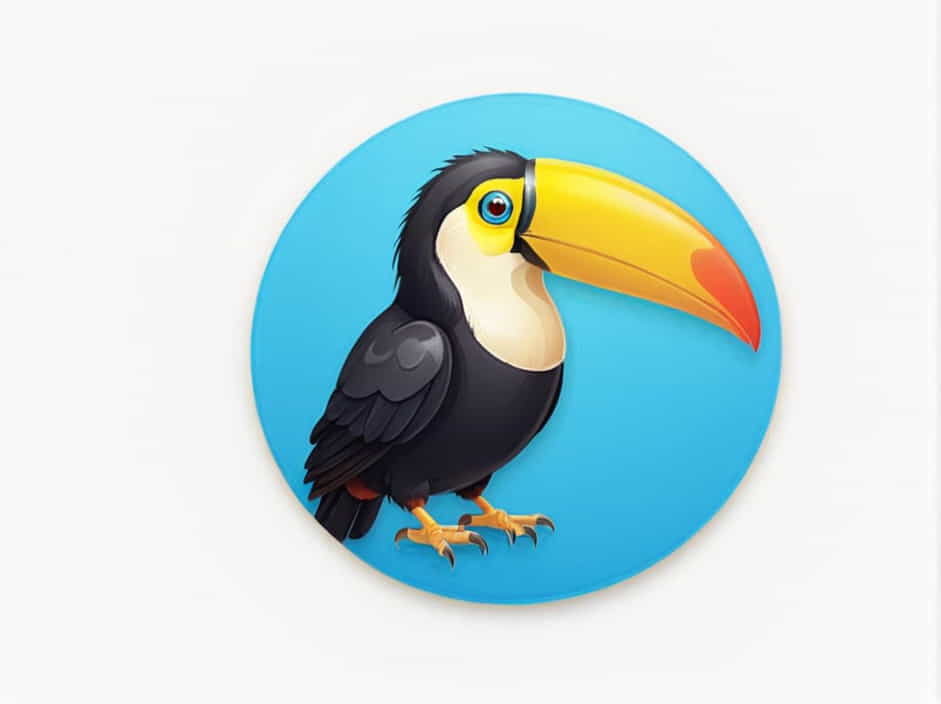Toucans are among the most recognizable birds in the world, famous for their large, colorful beaks and striking plumage. These birds, native to Central and South America, thrive in tropical rainforests and are often associated with vibrant wildlife.
In this topic, we will explore the physical characteristics, diet, habitat, behavior, and conservation status of toucans, providing an in-depth look at these fascinating creatures.
1. What Does a Toucan Look Like?
A. Distinctive Beak
One of the most remarkable features of a toucan is its oversized beak, which can be nearly half the length of its body. Despite its size, the beak is lightweight, made of a honeycomb-like structure of keratin.
The beak serves multiple functions, including:
- Regulating body temperature by dispersing heat.
- Grabbing fruit from tree branches.
- Intimidating predators and rivals.
B. Colorful Plumage
Toucans display brightly colored feathers, often in shades of black, white, yellow, and red. Their vivid appearance helps them blend into dense forest canopies, offering some protection from predators.
C. Size and Weight
Different species of toucans vary in size. On average:
- Length: 30-65 cm (12-26 inches).
- Weight: 130-680 grams (4.5-24 ounces).
The Toco Toucan (Ramphastos toco) is the largest and most well-known species, often depicted in media and advertising.
2. Where Do Toucans Live?
A. Natural Habitat
Toucans primarily inhabit tropical rainforests in:
- Brazil, Colombia, Venezuela, Ecuador, and Peru.
- The Amazon Basin, where dense vegetation provides food and shelter.
They prefer high tree canopies, rarely venturing to the forest floor.
B. Climate and Adaptation
As tropical birds, toucans thrive in warm and humid climates. Their large beaks play a role in keeping them cool, allowing heat dissipation similar to how elephants use their ears.
3. What Do Toucans Eat?
Toucans are omnivorous, meaning they eat both plants and small animals.
A. Fruits and Seeds
A major part of their diet consists of fruits, berries, and seeds. They use their large beaks to:
- Pluck fruit from high branches.
- Peel the outer layers before swallowing.
B. Small Animals and Insects
In addition to fruit, toucans consume:
- Insects like beetles and grasshoppers.
- Small reptiles and amphibians such as lizards and tree frogs.
- Bird eggs and nestlings from other species when food is scarce.
Their varied diet helps maintain the ecological balance of their habitat.
4. How Do Toucans Behave?
A. Social Birds
Toucans are highly social creatures, often living in small flocks of 6-12 birds. They communicate through:
- Loud calls and croaks, which can be heard from long distances.
- Beak tapping and playful chasing, especially during mating season.
B. Flight and Movement
Despite their large beaks, toucans are not strong fliers. Instead, they move through the forest by:
- Gliding from branch to branch rather than flying long distances.
- Using their clawed feet and tails for balance.
Their agile movement helps them navigate dense forest canopies with ease.
5. Reproduction and Nesting
A. Breeding Season
Toucans typically breed once a year, during the rainy season when food is abundant.
B. Nesting Habits
- They nest in tree cavities, often in holes left by woodpeckers.
- The female lays 2-4 eggs, which both parents take turns incubating.
- Chicks hatch blind and featherless, relying on their parents for food.
After about 6-8 weeks, young toucans develop enough strength to leave the nest.
6. Threats and Conservation Status
A. Natural Predators
Toucans face threats from various predators, including:
- Snakes and jaguars, which raid their nests.
- Large birds of prey, like eagles and hawks.
B. Human Impact
Human activities pose greater risks to toucans, such as:
- Deforestation, which destroys their natural habitat.
- Illegal pet trade, where toucans are captured and sold as exotic pets.
C. Conservation Efforts
Several organizations work to protect toucans and their ecosystems by:
- Promoting rainforest conservation projects.
- Enforcing laws against illegal wildlife trade.
- Educating the public about the importance of biodiversity.
Some species, like the Keel-billed Toucan (Ramphastos sulfuratus), are classified as Least Concern, while others face increasing habitat loss.
7. Interesting Facts About Toucans
- Toucans can regulate their body temperature using their beaks, similar to how humans sweat.
- Despite their size, toucan beaks are extremely light due to their hollow structure.
- Toucans cannot build their own nests and rely on tree cavities made by other animals.
- The Guinness beer logo features a toucan, making it one of the most famous bird mascots in advertising.
- Toucans are often mistaken for hornbills, but they are not closely related.
Toucans are one of the most iconic birds of the rainforest, known for their large, colorful beaks and playful nature. Their role in the ecosystem, dispersing seeds and maintaining biodiversity, makes them essential to tropical forests.
However, deforestation and illegal wildlife trade threaten their existence. Conservation efforts are crucial to ensuring these vibrant birds continue to thrive in the wild.
By learning about and supporting wildlife protection programs, we can help safeguard the future of these incredible birds.
